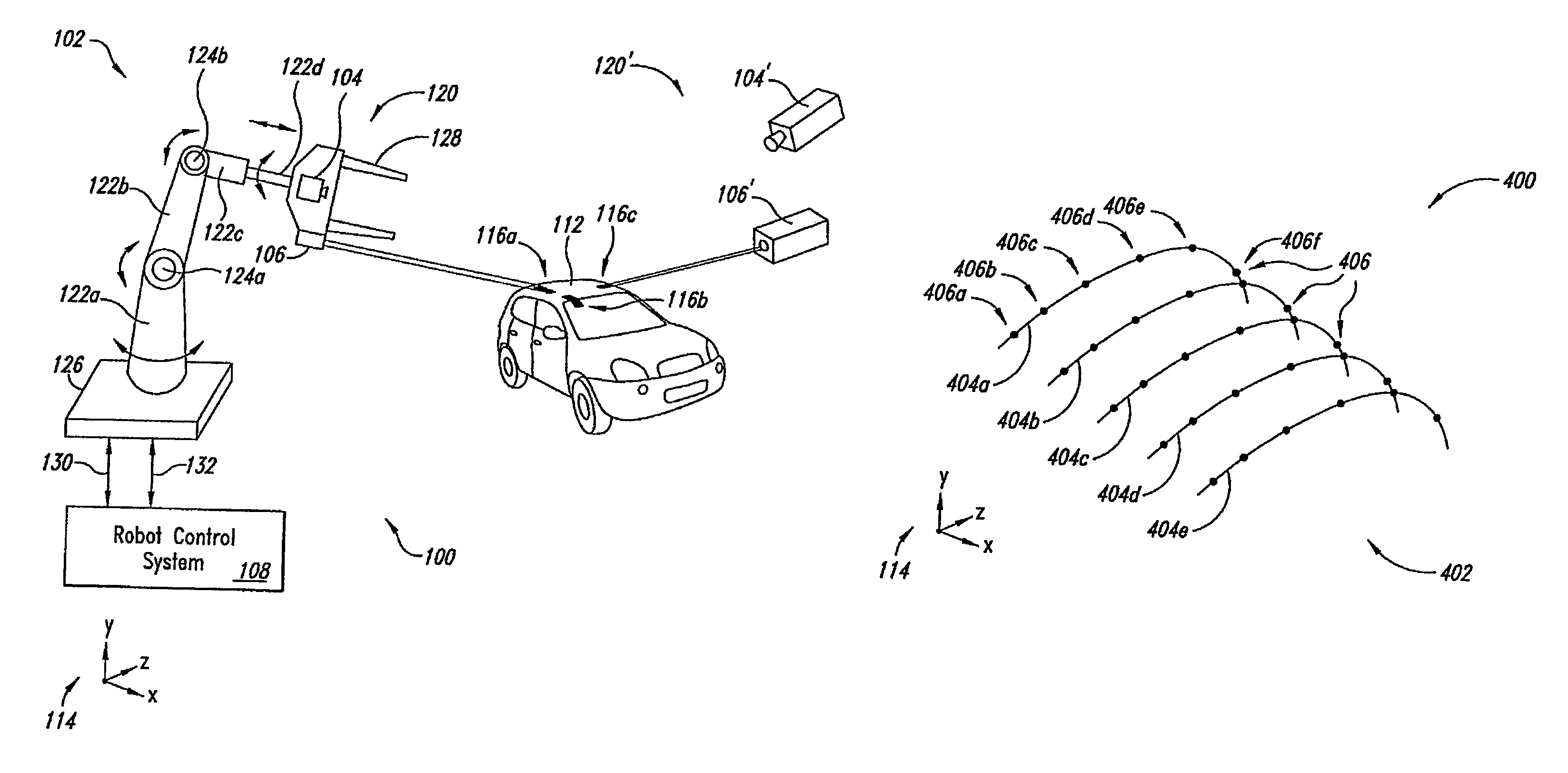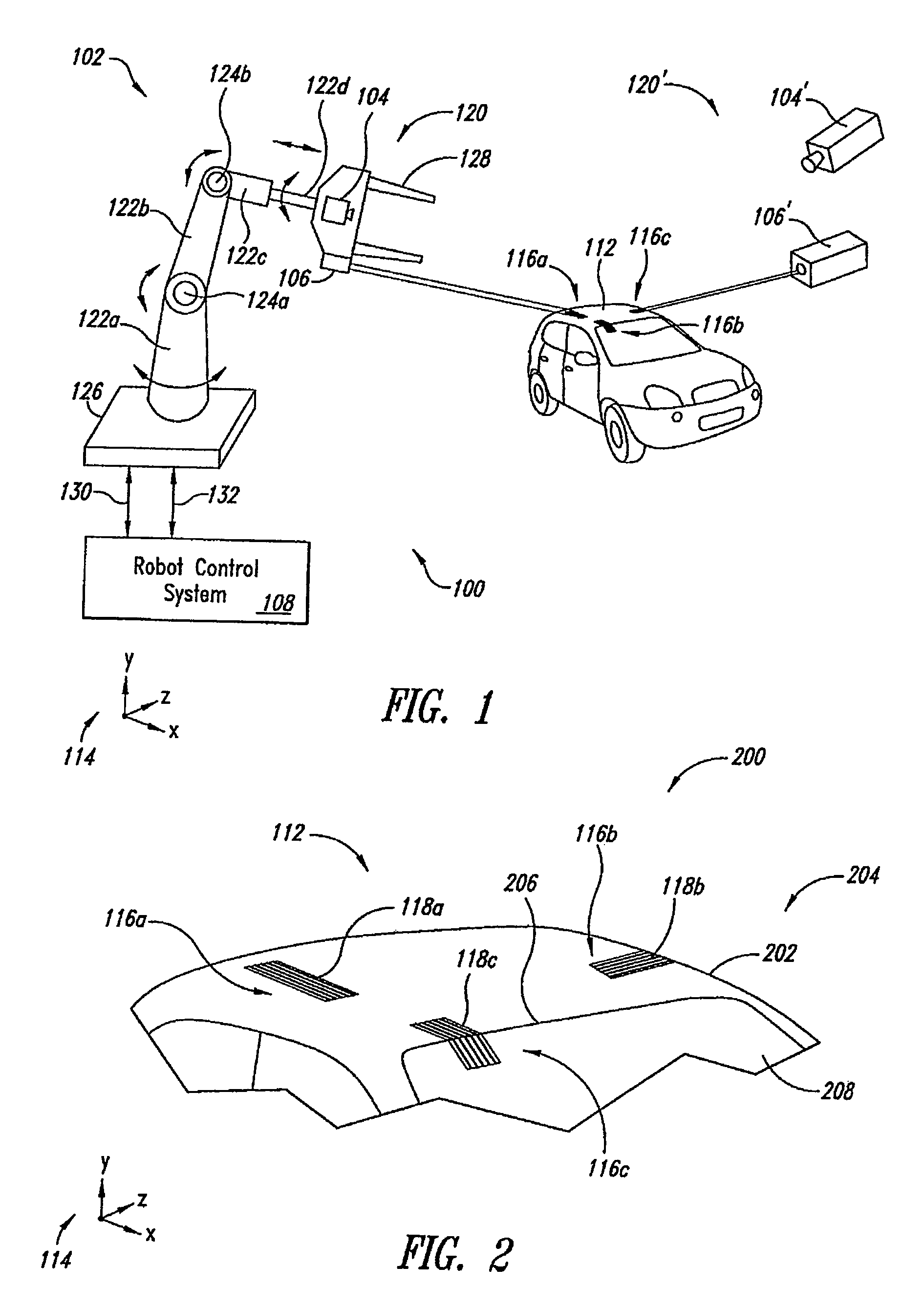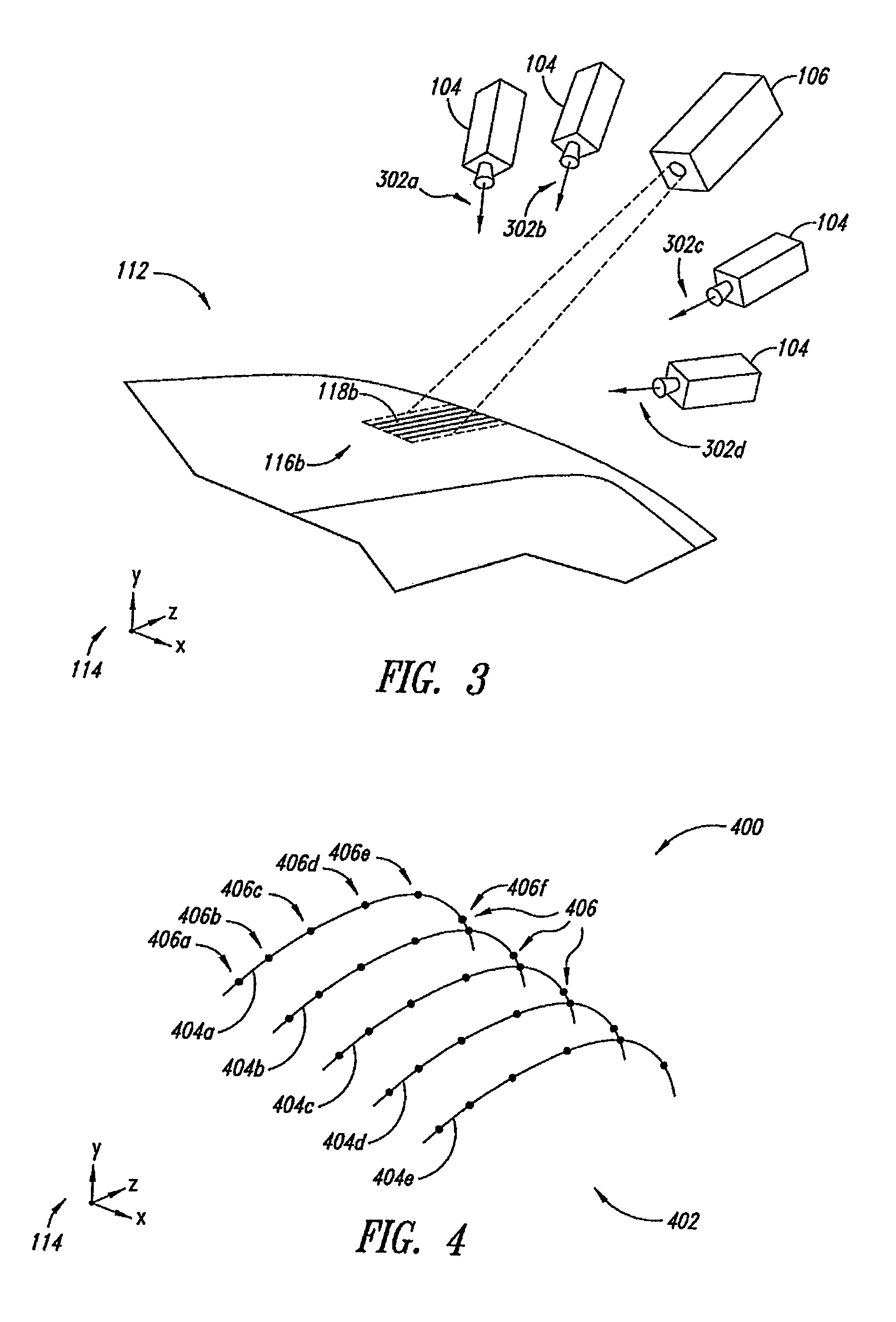System and method of determining object pose
a technology of object pose and system, applied in the field of robot vision based systems, can solve the problems of inability to obtain models from original equipment manufacturers, lack of sharp or high contrast features of models, and inability to clearly distinguish objects, etc., and achieve the effect of increasing the efficiency of object pose determination
- Summary
- Abstract
- Description
- Claims
- Application Information
AI Technical Summary
Benefits of technology
Problems solved by technology
Method used
Image
Examples
Embodiment Construction
[0023]In the following description, certain specific details are set forth in order to provide a thorough understanding of various embodiments. However, one skilled in the art will understand that the embodiments may be practiced without these details. In other instances, well known structures associated with robotic systems have not been shown or described in detail to avoid unnecessarily obscuring descriptions of the embodiments.
[0024]Unless the context requires otherwise, throughout the specification and claims which follow, the word “comprise” and variations thereof, such as “comprises” and “comprising,” are to be construed in an open sense, that is as “including, but not limited to.”
[0025]The headings provided herein are for convenience only and do not interpret the scope or meaning of the claimed embodiments.
[0026]Overview of the Object Pose Determination System
[0027]Images of one or more local surfaces are captured to determine a pose of an object of interest. Image capture o...
PUM
 Login to View More
Login to View More Abstract
Description
Claims
Application Information
 Login to View More
Login to View More - R&D
- Intellectual Property
- Life Sciences
- Materials
- Tech Scout
- Unparalleled Data Quality
- Higher Quality Content
- 60% Fewer Hallucinations
Browse by: Latest US Patents, China's latest patents, Technical Efficacy Thesaurus, Application Domain, Technology Topic, Popular Technical Reports.
© 2025 PatSnap. All rights reserved.Legal|Privacy policy|Modern Slavery Act Transparency Statement|Sitemap|About US| Contact US: help@patsnap.com



